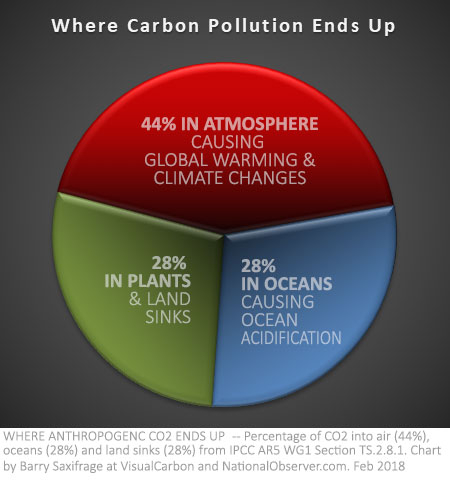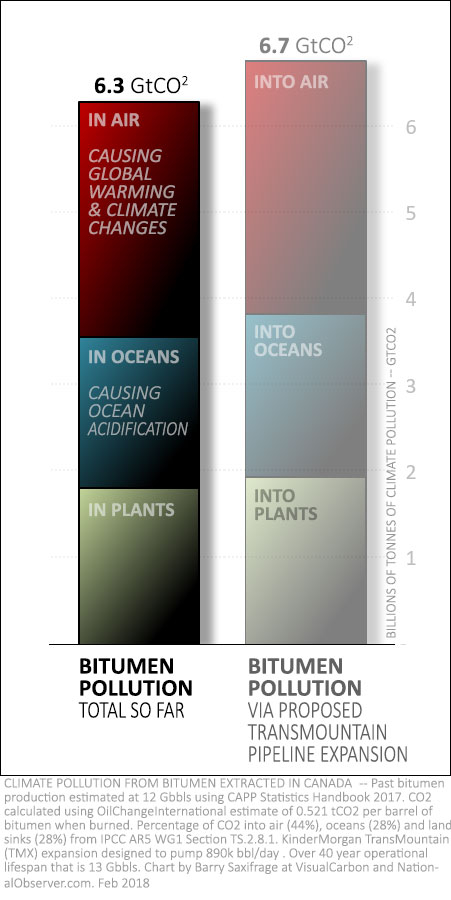Articles Menu

Lost in the heated arguments over Kinder Morgan's proposed Trans Mountain pipeline is this simple fact: more than a quarter of the bitumen flowing through it will end up as pollution spilling into our oceans — one way or the other.
All the bitumen that doesn't spill from pipelines or tankers gets burned, ending up as carbon pollution dumped into our environment. Over one quarter ends up in the oceans, acidifying them for millennia to come.
More than a quarter of the bitumen flowing through Kinder Morgan's Trans Mountain pipeline will end up as pollution spilling into our oceans — one way or the other.
So far, over 12 billion barrels of bitumen have been pulled out of the ground in Alberta.1 After being burned in trucks and cars, the resulting carbon pollution has all been dumped (aka: spilled, emitted, released) into our air and water. The total so far? Twelve billion barrels of bitumen (~6.3 GtCO2).3
Where did it all go?

Over three billion barrels worth of Alberta bitumen (~1.75 GtCO2) has now entered the world's oceans.
The percentage of all that ocean pollution which humans have cleaned up? Zero. And the resulting ocean acidification will persist for tens of thousands of years — many times longer than human civilization has existed.
Another 48 per cent of burned fossil carbon stays in our atmosphere. It thickens the heat-trapping blanket around the planet, increasing the heat and energy in our weather systems via global warming. That’s why we’re getting rising seas and heatwaves, fiercer storms and droughts, surging wildfires and floods, and widespread ecological damage.
So far, over five billion barrels worth of bitumen (~2.7 GtCO2) have been dumped into our air. None of that has been cleaned up either.

Kinder Morgan's new pipeline aims to pump as much new bitumen as Alberta has extracted in the entire history of the oil sands.
The pipeline is designed to pump 890,000 barrels a day. Over a forty year operational lifespan that adds up to 13 billion barrels. (Note that the original Trans Mountain pipeline is still pumping after 65 years.)
Doubling the amount of bitumen extracted will obviously double the amount of bitumen pollution dumped in our environment:
One way or the other, bitumen, like other fossil fuels, will pollute our oceans. Whether this fossil carbon gets spilled in liquid, solid or gaseous form, it will cause lasting damage to marine life, to coral reefs, to fisheries and to the people who cherish and depend on our oceans.
There is no scenario in which bitumen doesn't "spill" into our oceans causing harm. And there is no proposal to clean up any of the billions of tonnes of acidifying pollution that will end up there.
------------------
NOTES & SOURCES: